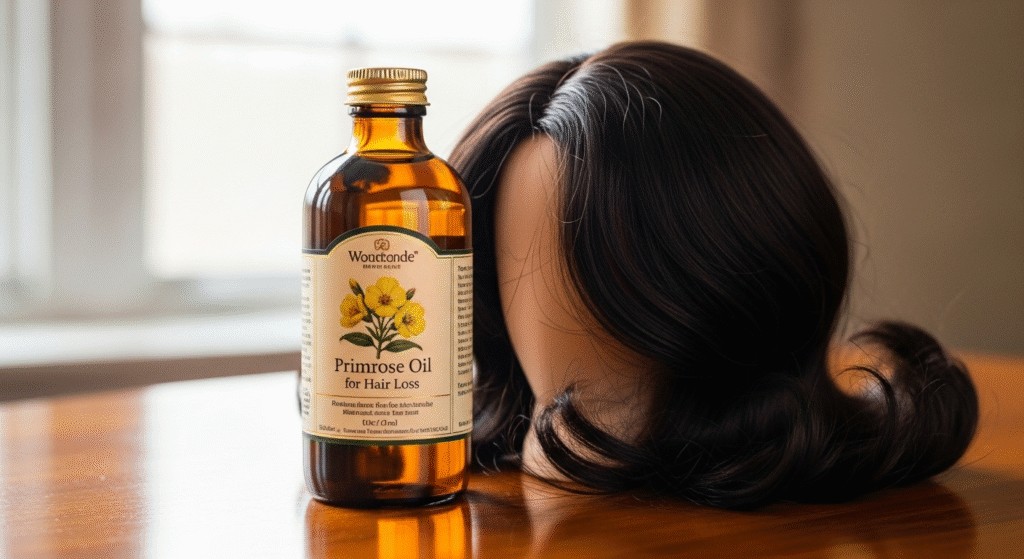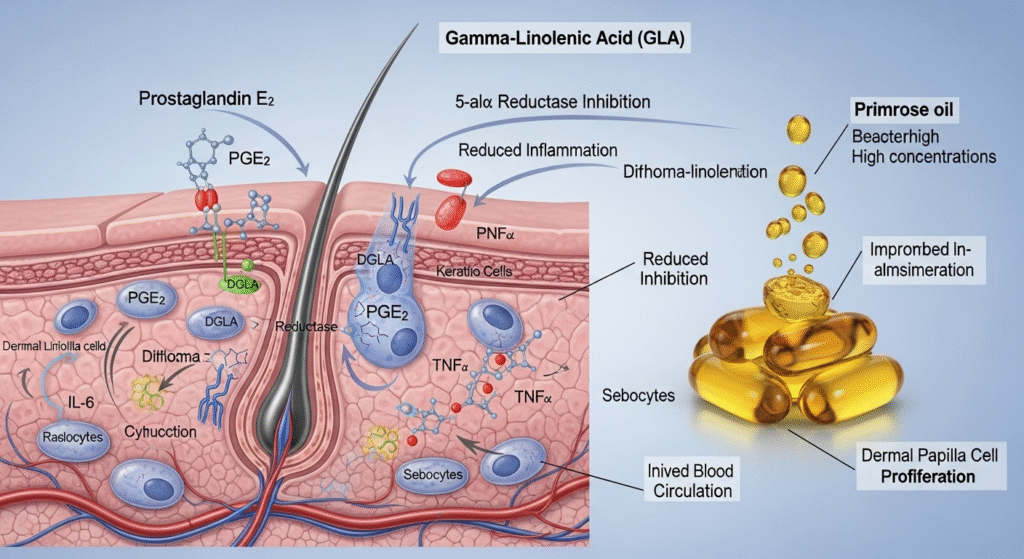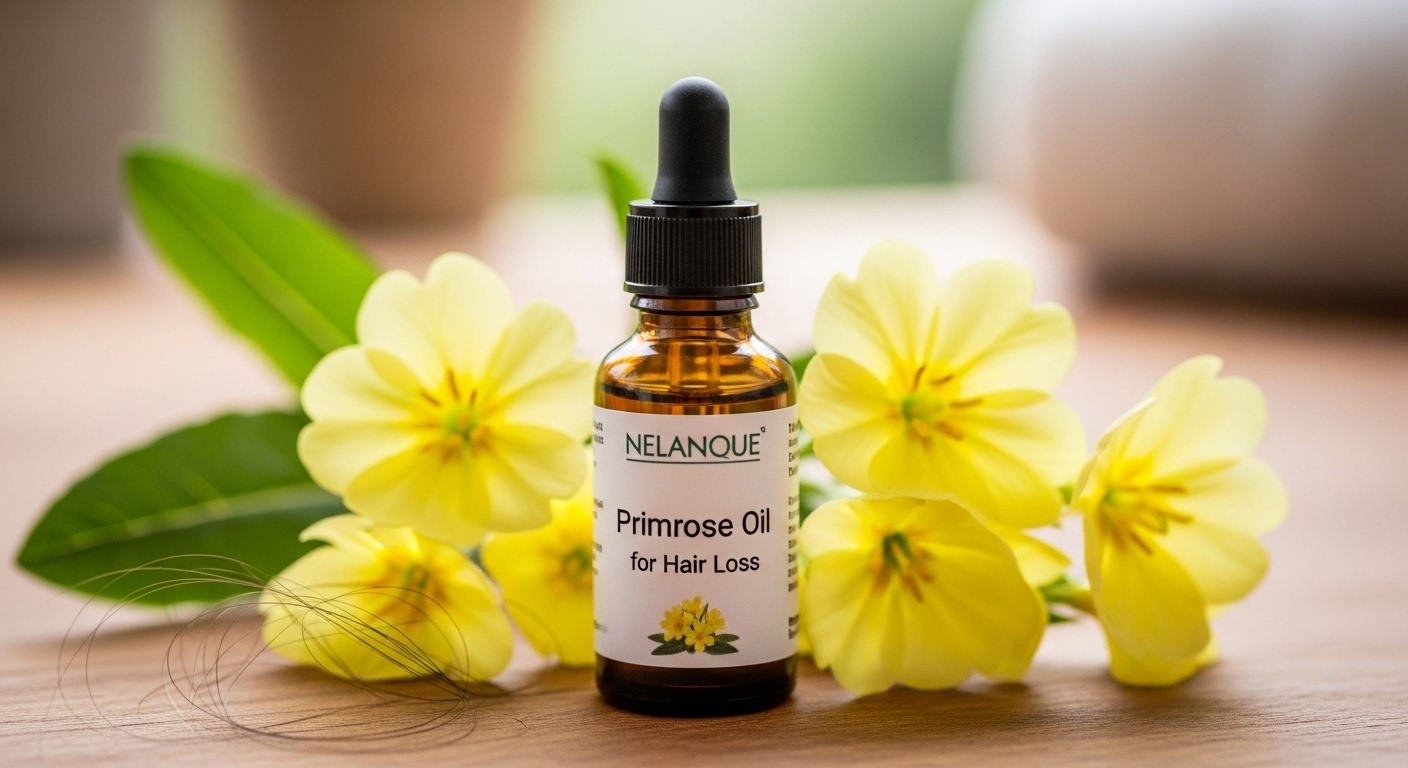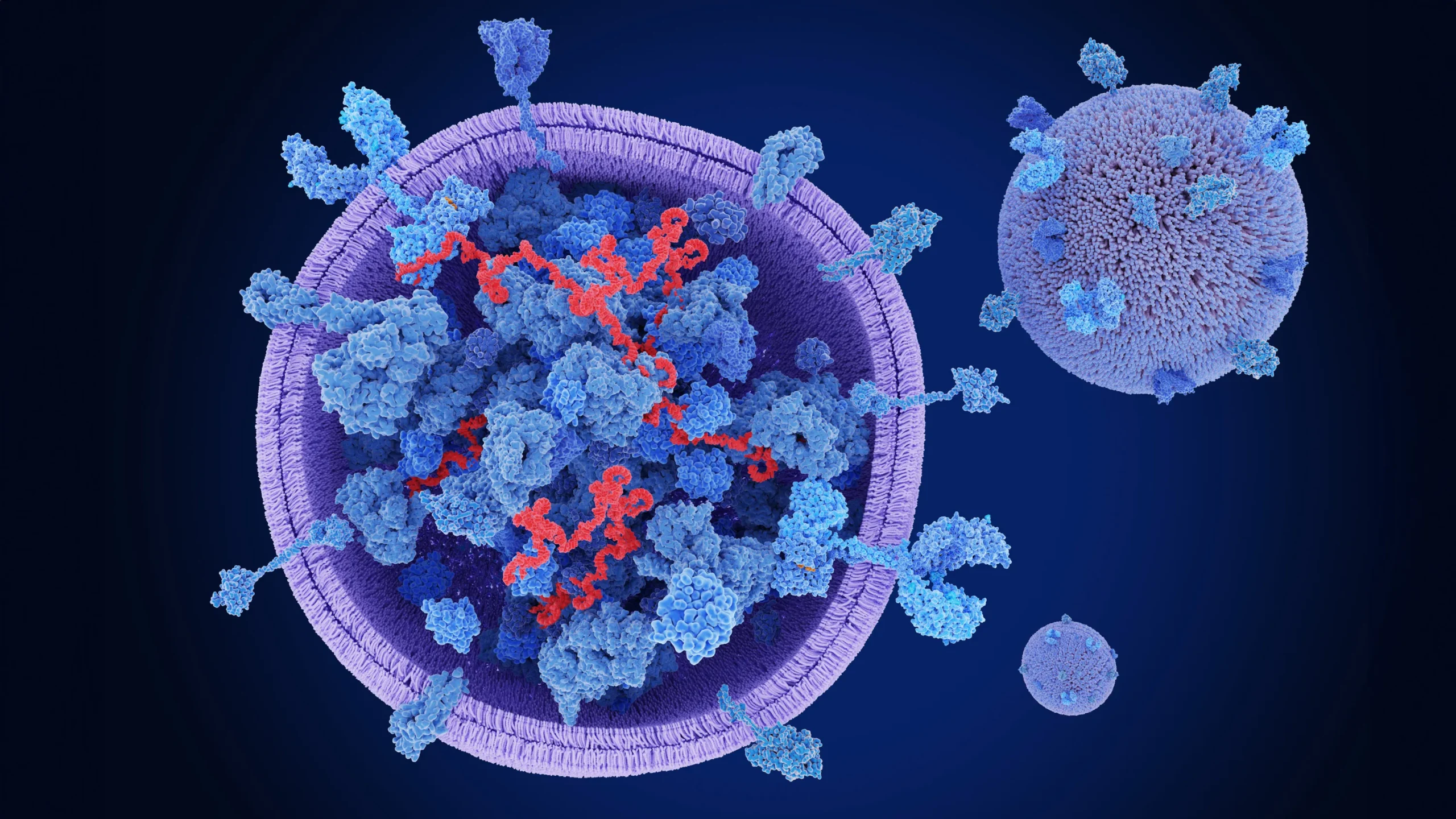Hair loss can be frustrating and sometimes overwhelming. Whether you’re noticing thinning hair, shedding, or a receding hairline, the search for effective treatments can seem never-ending. Primrose oil for hair loss is one natural solution that has gained attention for its potential benefits. Packed with essential fatty acids, it has the power to nourish hair …
Hair loss can be frustrating and sometimes overwhelming. Whether you’re noticing thinning hair, shedding, or a receding hairline, the search for effective treatments can seem never-ending. Primrose oil for hair loss is one natural solution that has gained attention for its potential benefits. Packed with essential fatty acids, it has the power to nourish hair follicles, support scalp health, and promote hair growth.
In this article, we’ll dive into how primrose oil works, its benefits for hair loss, how to use it, and what scientific evidence supports its effectiveness. Plus, we’ll highlight expert tips to help you integrate primrose oil into your hair care routine for optimal results.

What is Primrose Oil and How Does It Help with Hair Loss?
Primrose oil, derived from the seeds of the evening primrose plant, is known for its rich content of essential fatty acids, particularly gamma-linolenic acid (GLA). This oil has been used in traditional medicine for a variety of purposes, including improving skin conditions, reducing inflammation, and supporting hair health.
How Primrose Oil Affects Hair Follicles and Scalp
Primrose oil works by nourishing the scalp and hair follicles, which can play a key role in reducing hair thinning and promoting growth. The GLA in primrose oil helps to balance hormones, reduce inflammation, and improve circulation to the scalp — all essential factors for a healthy hair growth environment.
Additionally, the anti-inflammatory properties of primrose oil help soothe irritated scalps and address common conditions like dandruff, which can hinder hair growth.
Benefits of Using Primrose Oil for Hair Loss
Using primrose oil for hair loss can offer a range of benefits for individuals struggling with thinning or shedding hair. Here’s a look at how it works:
1. Promotes Healthy Hair Growth
One of the key reasons primrose oil is popular in hair care is its ability to promote healthy hair growth. Omega-6 fatty acids, particularly GLA, help strengthen hair follicles and support the hair growth cycle. When applied topically or consumed, primrose oil encourages hair growth from the roots and minimizes hair shedding.
2. Prevents Hair Breakage and Strengthens Hair Strands
Primrose oil helps prevent hair from becoming dry, brittle, and weak. By nourishing hair strands with essential fatty acids, it promotes strength and resilience, reducing the risk of breakage.
3. Supports Scalp Health and Reduces Inflammation
An irritated or inflamed scalp can contribute to hair loss, as it creates an unhealthy environment for hair follicles. Primrose oil’s anti-inflammatory properties help soothe the scalp, alleviate dandruff, and combat dryness. A healthy scalp is the foundation for strong, vibrant hair.
4. Restores Shine and Volume to Hair
In addition to promoting growth, primrose oil enhances the appearance of your hair by giving it a natural shine and volume. It helps restore moisture to dry, damaged hair, leaving it looking glossy and healthy.
How to Use Primrose Oil for Hair Loss

There are several ways to incorporate primrose oil into your hair care routine. Here are the most common methods:
1. Topical Application: How to Massage the Oil into Your Scalp
- Step 1: Take a few drops of primrose oil and warm it up by rubbing it between your palms.
- Step 2: Gently massage the oil into your scalp using your fingertips in circular motions for about 5–10 minutes.
- Step 3: Leave the oil on your scalp for at least 30 minutes before rinsing with lukewarm water. For best results, you can leave it overnight.
2. Oral Supplementation: Taking Primrose Oil Pills
Primrose oil is also available in capsule form, making it easy to incorporate into your diet. The recommended dosage for hair loss typically ranges from 500–1000 mg per day, but it’s always best to consult with a healthcare provider before starting supplements.
3. DIY Hair Masks with Primrose Oil
You can create your own nourishing hair masks by combining primrose oil with other beneficial ingredients. Here’s a simple recipe:
- 2 tablespoons of primrose oil
- 1 tablespoon of honey
- 1 tablespoon of coconut oil
- Mix the ingredients and apply to your hair, focusing on the scalp and ends. Leave the mask on for 30 minutes, then rinse thoroughly.
Scientific Evidence Behind Primrose Oil for Hair Loss

While primrose oil is often touted for its benefits, it’s important to look at the scientific research behind these claims. Several studies have explored the impact of essential fatty acids on hair health, with promising results.
What Research Says About Primrose Oil for Hair Loss Health
A study published in the Journal of Dermatology found that evening primrose oil, when used topically or taken orally, significantly improved hair quality and density in participants with thinning hair. The omega-6 fatty acids, particularly GLA, were credited with promoting healthy hair follicles and reducing hair loss.
Potential Side Effects and Considerations of Primrose Oil for Hair Loss
Though primrose oil is generally considered safe, it’s important to be aware of possible side effects.
Allergic Reactions and Skin Sensitivity
Some people may experience skin irritation or allergic reactions when using primrose oil topically. It’s always a good idea to conduct a patch test before applying it extensively to your scalp.
Interaction with Medications
Primrose oil may interact with certain medications, including blood thinners and anti-seizure drugs. If you’re on any medications, consult your healthcare provider before using primrose oil.
Should Pregnant Women Use Primrose Oil?
While primrose oil is safe for most people, it should be avoided during pregnancy unless otherwise advised by a healthcare provider, as it may have hormonal effects.
Expert Recovery Tips and Recommendations
Avoid Excessive Heat Styling: Minimize the use of heated tools to prevent further damage to your hair.
Combine with Other Treatments: Primrose oil can work synergistically with other treatments, such as minoxidil or biotin supplements, for enhanced results.
Maintain a Healthy Diet: Eating a balanced diet with plenty of vitamins and minerals, including zinc, iron, and vitamins A, C, and E, will support the effects of primrose oil.
FAQs
1. Does Primrose Oil Work for Male Pattern Baldness?
Primrose oil is more effective for improving scalp health and stimulating hair growth in cases of mild thinning. For more advanced cases like male pattern baldness, a combination of treatments may be necessary.
2. How Long Does It Take to See Results from Primrose Oil?
It can take anywhere from 4 to 12 weeks of consistent use to notice improvements in hair growth. Individual results may vary.
3. Can Primrose Oil Help with Thinning Edges or Receding Hairlines?
Yes, primrose oil can help nourish the hair around your edges and promote growth, but results may take time.
4. Is Primrose Oil Effective for Both Men and Women?
Primrose oil is effective for both men and women, especially those experiencing hair thinning related to hormonal imbalances or scalp conditions.
Conclusion
Primrose oil offers a promising natural solution for those dealing with hair loss. With its ability to nourish the scalp, reduce inflammation, and promote healthy hair growth, it’s an excellent addition to your hair care regimen.
If you’re looking for personalized advice or recommendations, Book a Consultation Dr. Uzma Irfan, an ISHRS-certified surgeon in Islamabad Today to explore how primrose oil can fit into your hair care routine and help you achieve stronger, healthier hair.






